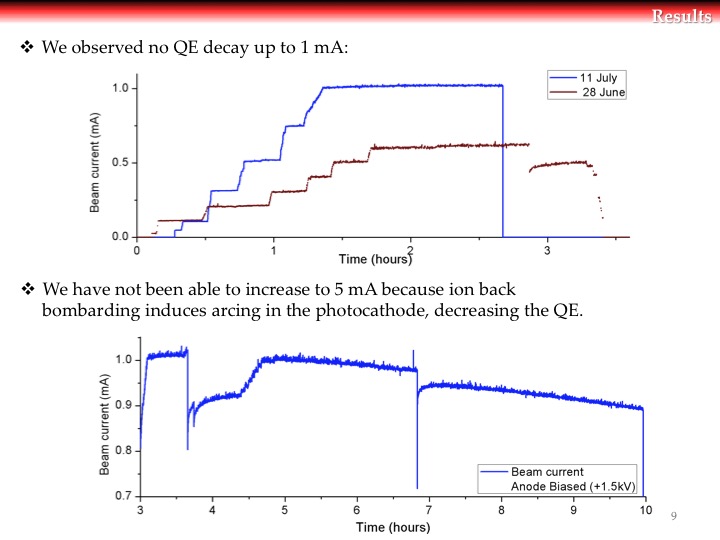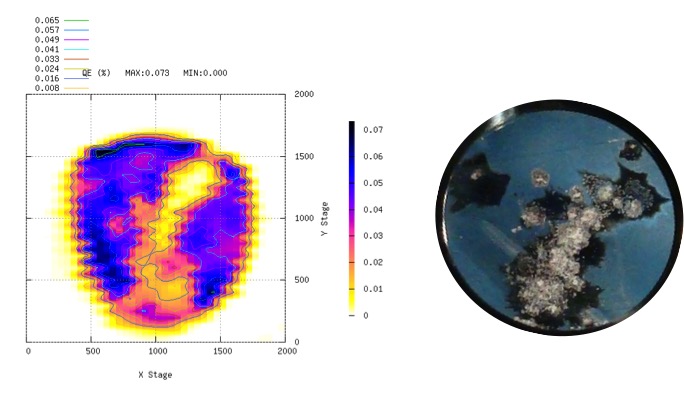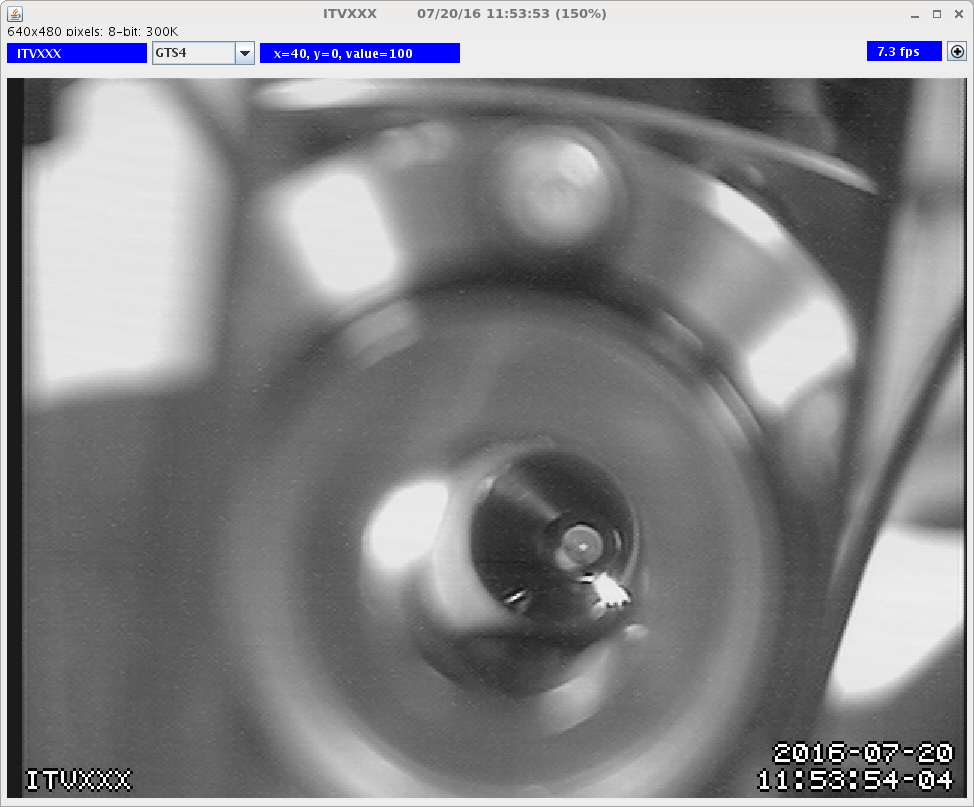Difference between revisions of "GTS meeting 7 25 16"
Jump to navigation
Jump to search
| Line 23: | Line 23: | ||
** QE is very low. | ** QE is very low. | ||
** This cathode is being heat cleaned and will be activated again. Mamun has a better scheme for masking the alkalies. | ** This cathode is being heat cleaned and will be activated again. Mamun has a better scheme for masking the alkalies. | ||
| − | |||
Revision as of 13:25, 26 July 2016
- 1 mA semi-stable running for nearly 7 hours: [1]
- At 300kV, with anode bias at +1500 V, and
- Better beam focusing and centering in the viewers, rather than on the solenoids.
- We think is the latter that made the greatest contribution to high current beam
- Even so, we still see sudden "photocathode-anode arcing" that reduces the QE on the illuminated area, but only slightly

- By moving a hand-held magnet around the gun chamber, "something changed" and now there is field emission starting at around 230kV.
- This induced several gun HV trips (on current) while attempting to operate at 300kV.
- We tried Kr processing at no avail. We are then operating at 225kV.
- The QE scanner is operational!
- The key to make it work was to bias the gun at -1kV, using the Glassman HVPS, and the anode grounded through the Keithley pico-ammeter that reads in EPICS. YEs, for this we need to lock the GTS enclosure in Run mode.
- The following scan was taken after doing Kr processing. This is why the QE in the un-damaged area is smaller than 2.5%.


